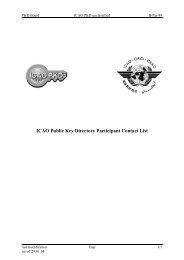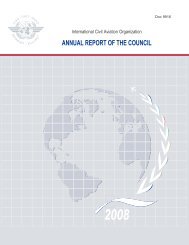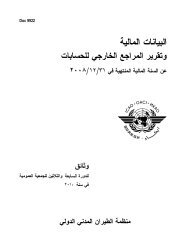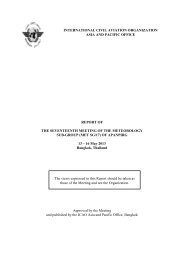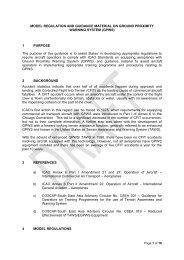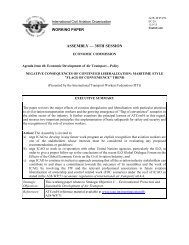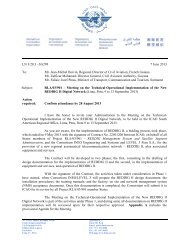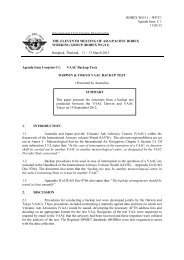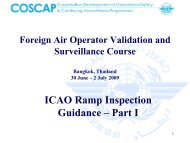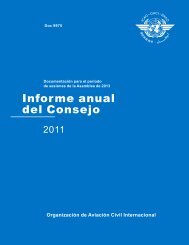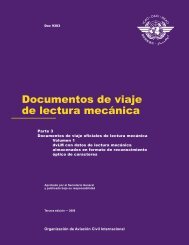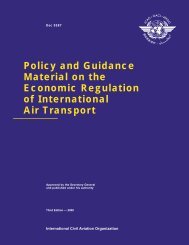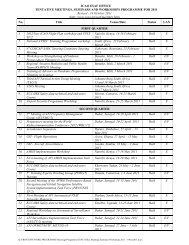afi met bulletins exchange (ambex) handbook - ICAO
afi met bulletins exchange (ambex) handbook - ICAO
afi met bulletins exchange (ambex) handbook - ICAO
You also want an ePaper? Increase the reach of your titles
YUMPU automatically turns print PDFs into web optimized ePapers that Google loves.
1. FOREWARD<br />
Page 3 of 29<br />
Volcanic Ash Contingency Plan – AFI Region<br />
1.1 Within and adjacent to the Africa and Indian Ocean (AFI) Region there are areas of volcanic activities<br />
which are likely to affect flight in the AFI Region. The major volcanoes in the region are located in the following States:<br />
Algeria, Cameroon, Cape Verde Islands, Chad, Comoros Island, Democratic Republic of Congo, Djibouti, Eritrea,<br />
Ethiopia, France (Reunion Island), Kenya, Madagascar, Mali, Niger, Nigeria, Rwanda, Sao Tome and Principe, Spain<br />
(Canary Islands, Madeira), Sudan, Tanzania and Uganda. The names of the concerned volcano are listed in Attachment<br />
L (source: Smithsonian Institution).<br />
1.2 The AFI Air Traffic Management (ATM) Volcanic Ash Contingency Plan sets out standardised guidelines<br />
for the alerting of aircraft when eruptions occur, and procedures to be followed. Volcanic contaminations, of which<br />
volcanic ash is the most serious, may be a hazard for flight operations; the issue cannot be resolved in isolation but<br />
through collaborative decision-making (CDM) involving all entities concerned. During an eruption volcanic<br />
contamination can reach and exceed the cruising altitudes of turbine-powered aeroplanes within minutes and spread<br />
over vast geographical areas within a few days. Encounters with volcanic ash may result in one or more of the following<br />
and other problems:<br />
• the malfunction, or failure, of one or more engines leading not only to reduction, or complete loss, of<br />
thrust but also to failures of electrical, pneumatic and hydraulic systems;<br />
• blockage of pitot and static sensors resulting in unreliable airspeed indications and erroneous warnings;<br />
• windscreens to be rendered partially or completely opaque;<br />
• smoke, dust and/or toxic chemical contamination of cabin air requiring crew use of oxygen masks, thus<br />
impacting communications; electronic systems may also be affected;<br />
• erosion of external and internal aircraft components;<br />
• reduced electronic cooling efficiency leading to a wide range of aircraft system failures;<br />
• aircraft to be manoeuvred in a manner that conflicts with other aircraft;<br />
• deposits of volcanic ash on a runway degrading braking performance, most significantly if the ash is<br />
wet; in extreme cases, this can lead to runway closure.<br />
1.3 Operators are required by <strong>ICAO</strong> Annex 6 – Operation of Aircraft to assess the risk of operation in volcanic<br />
ash and to implement appropriate mitigation measures in accordance with their safety management system (SMS) as<br />
approved by the State of the Operator/Registry, as appropriate. The suggested actions outlined in this document are<br />
based on the assumption that the <strong>ICAO</strong> requirements regarding safety management systems have been implemented by<br />
the operators. Detailed guidance on Safety Risk Assessments for flight operations with regard to volcanic contamination<br />
is available at .... (<strong>ICAO</strong> Doc####)<br />
1.4 It should be noted that this document is an ATM contingency plan including its interfaces with supporting<br />
services such as Aeronautical Information Service (AIS) and Meteorological (MET) services and that the plan therefore<br />
primarily addresses the provider States. Where distinct actions by the Meteorological Watch Offices (MWOs) are<br />
described, these are additional procedures to be considered by MWOs. Where actions by Volcanic Ash Advisory<br />
Centres (VAACs) and operators are described, these are for clarification only. As volcanic events also affect people and<br />
industries that are not related to aviation, it is highly likely that contingency plans of a more generic ―disaster response‖<br />
nature exist in many States. Since they too rely on information sources, such as Volcanological Observatories, it is<br />
advisable to make arrangements to share information with institutions.<br />
1.5 Volcanic Ash can also affect the operation of aircraft on aerodromes. In extreme cases, aerodromes might<br />
no longer be available for operation at all, resulting in repercussions on the ATM system; e.g. diversions, revised traffic<br />
flow, etc.<br />
1.6 These suggested procedures are not intended to establish or confirm a safe level of volcanic contamination.<br />
Operation through any area where volcanic ash is present or forecast is at the discretion of the operator. In this context it<br />
should be noted that some aircraft types or engine technologies are more vulnerable to volcanic contaminants; any<br />
specific measures to be applied would therefore have to take into account these variances. Considering that a<br />
commercial aircraft will travel about 150 km (80 NM) in 10 minutes and that volcanic ash can rise to flight levels



